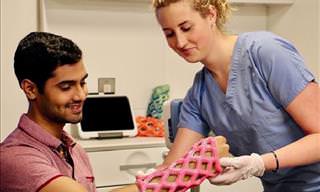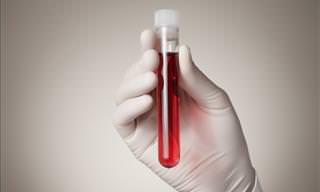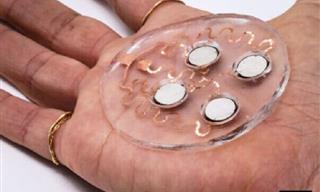Directly administering drugs to the affected area through the skin is an attractive option as it allows for efficient and targeted drug delivery. This can be especially beneficial for healing wounds, alleviating pain, and enhancing medical and cosmetic procedures. However, the challenge of drug delivery through the skin lies in the formidable outer skin layer that blocks the passage of most small molecules.
Recently, MIT researchers have created a wearable patch that employs ultrasonic waves to the skin, creating minuscule channels for drugs to pass through. The aim is to simplify drug delivery via the skin and could be applied to treating several skin conditions. The technique also holds promise in delivering a variety of drugs, such as muscle relaxants and hormones.
“The ease-of-use and high repeatability offered by this system provides a game-changing alternative to patients and consumers suffering from skin conditions and premature skin aging,” says Canan Dagdeviren, an associate professor in MIT’s Media Lab and the senior author of the study. “Delivering drugs this way could offer less systemic toxicity and is more local, comfortable, and controllable.”
See Also: Improve Your Health with These Incredible Devices
How does the patch work?
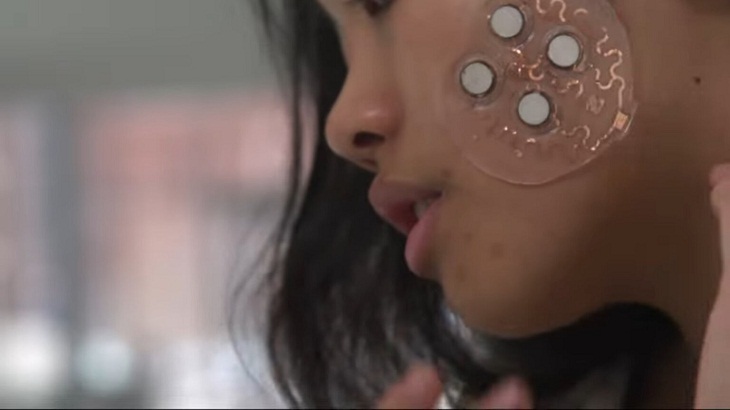
Image source: MIT
The researchers embarked on this project to explore unconventional drug administration routes. While oral and intravenous methods are common, targeted drug delivery can be achieved through the skin in specific situations.
Aastha Shah, a research assistant at MIT, emphasizes that delivering drugs through the skin has a major benefit - it removes the requirement of passing through the digestive system. Oral medication requires higher doses to make up for losses during gastric absorption. In comparison, skin-based delivery is a more focused approach to drug delivery.
Ultrasound exposure has been shown to increase skin permeability for small-molecule drugs, but current methods for delivering these drugs are limited by the use of cumbersome equipment. To address this, the MIT team aimed to create a lightweight, wearable patch for transdermal drug delivery, enhancing its usability across various applications.
The MIT scientists created a patch with multiple disc-shaped piezoelectric transducers that change electric currents into mechanical energy. These transducers reside in a polymeric cavity holding drug molecules in a fluid solution. Electric currents applied to the transducers create pressure waves in the solution, leading to bubble formation that ruptures against the skin. The microjets of fluid that result from this process penetrate through the skin’s outer layer, the stratum corneum.
Amin Karami, one of the co-authors of the study, says that the successful implementation of this technique paves the way for utilizing vibrations to amplify drug delivery. He asserts that the toolset is designed to enhance the mechanical and biological components of drug delivery by generating various waveform patterns based on a variety of parameters.
Using PDMS, a silicone-based polymer with adhesive properties, the patch was designed to securely attach to the skin without tape. The team experimented with the patch's capabilities by administering niacinamide, a B vitamin commonly found in sunscreens and moisturizers.
In experiments with pig skin, the researchers illustrated that the ultrasound patch enabled a 26-fold surge in drug penetration through the skin for niacinamide delivery, compared to the level achievable without ultrasonic intervention.
In addition, the team compared their new device to microneedling - a transdermal drug delivery technique that involves piercing the skin with tiny needles. The study found that the researchers' patch could administer the same amount of niacinamide in just 30 minutes that microneedles could administer in six hours.
Localizing drug delivery
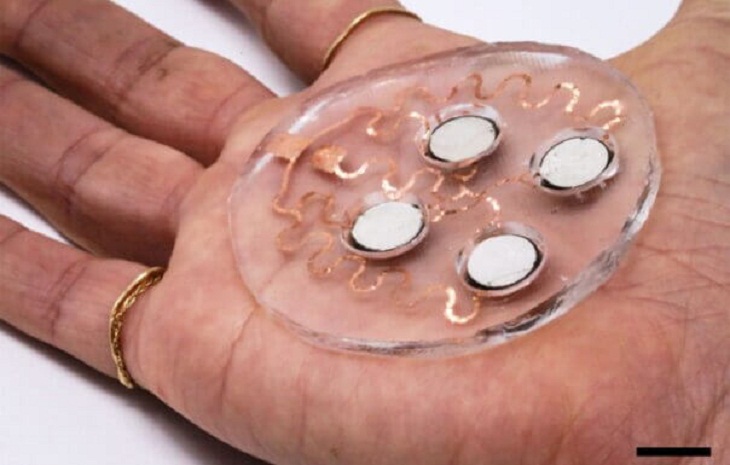
Image source: MIT
The device's current version permits drugs to permeate a few millimeters into the skin, making it potentially advantageous for drugs with local effects on the skin, such as those used to address age spots, dark spots, or burns.
The technique could be enhanced to allow deeper penetration, making it viable for drugs like fentanyl, lidocaine, and caffeine, which need to access the bloodstream. Another application that Dagdeviren envisions is the delivery of hormones, specifically progesterone. The researchers are also considering implanting similar devices within the body to treat various diseases, including cancer.
For now, the team aims to refine the wearable patch even more and has plans to carry out the laboratory tests again with more massive drug molecules. They also plan to conduct trials on human subjects soon.
Shah explains that they will assess the drug penetration characteristics of larger medicines to evaluate the feasibility of delivering hormones or insulin through the developed technology. This would be a more comfortable option for those who have to inject themselves daily.
See Also: Study Finds a Painless Way to Monitor Blood Sugar Levels
In the event of a successful implementation, this novel approach to drug delivery could represent a considerable advantage over traditional injection methods. This could potentially eliminate the need for needles altogether, transforming medication administration into a more convenient, painless, and patient-friendly process. This breakthrough also has the potential to revolutionize the medical field by providing a more accessible and efficient drug administration method. Additionally, needle-free medication delivery could alleviate the anxiety and discomfort that many patients experience with injections, potentially improving patient compliance and overall health outcomes.
The findings of the study are published in the journal Advanced Materials.
 Go to BabaMail
Go to BabaMail





